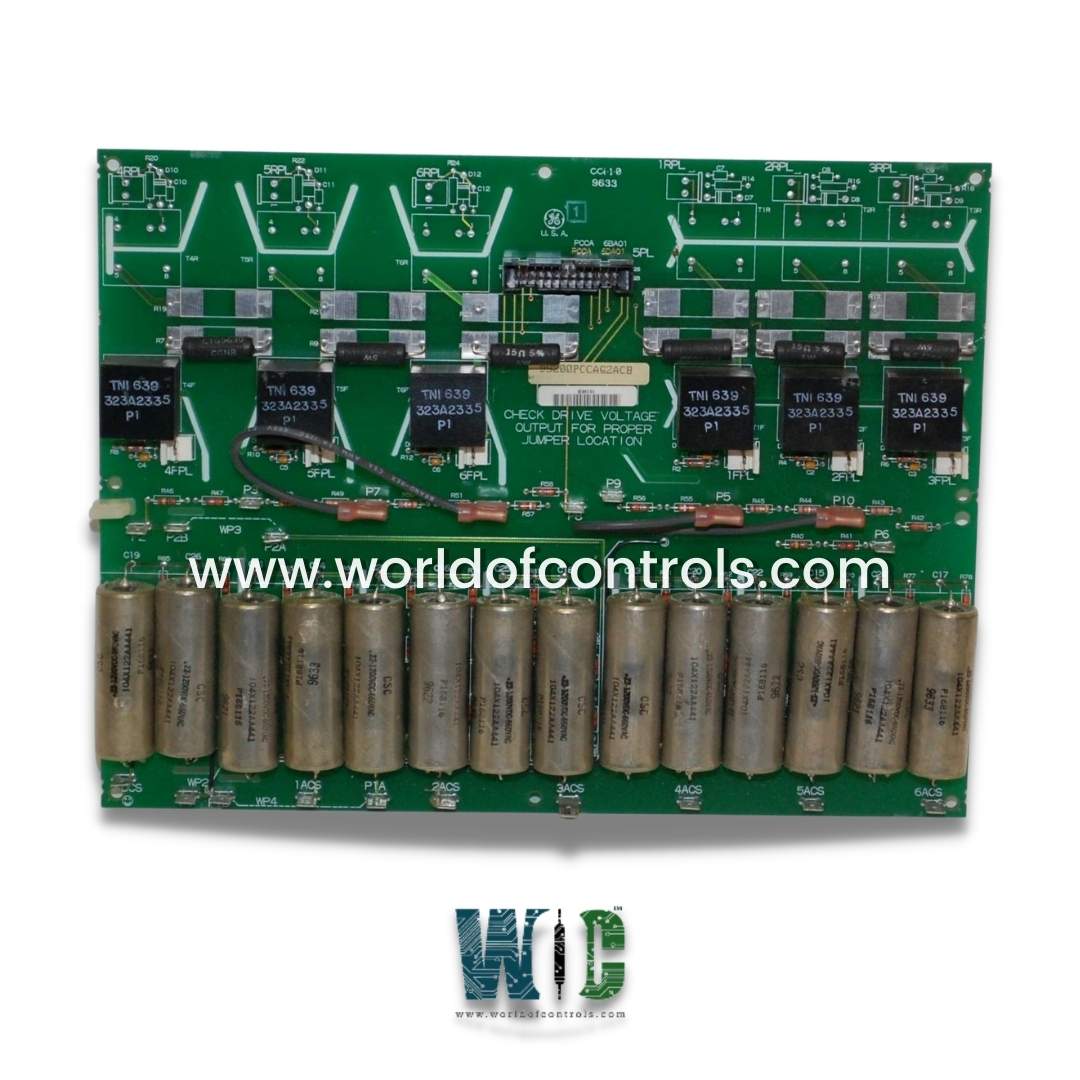
World Of Controls understands the criticality of your requirement and works towards reducing the lead time as much as possible.
DS200PCCAG2A - DC Power Connect Card is available in stock which ships the same day.
DS200PCCAG2A - DC Power Connect Card comes in UNUSED as well as REBUILT condition.
To avail our best deals for DS200PCCAG2A - DC Power Connect Card, contact us and we will get back to you within 24 hours.
SPECIFICATIONS:
Part Number: DS200PCCAG2A
Manufacturer: General Electric
Series: EX2000
Product Type: DC Power Connect Card
Power Requirements: +5 V dc, 6 A
Number of relay channels: 12
Power supply voltage: 28 V dc
Technology: Surface mount
Operating temperature: -30 to +65°C
Size: 15.9 cm high x 17.8 cm
Repair: 3-7 Day
Availability: In Stock
Country of Origin: United States
Manual: GEI-100161B
FUNCTIONAL DESCRIPTION:
DS200PCCAG2A is a DC Power Connect Card manufactured and designed by General Electric as part of the EX2000 Series used in GE Excitation Control Systems. The Power Connect Card (PCCA) serves as a link between the drive's control circuitry and the SCR power bridge. It utilizes pulse transformers to deliver a gate drive to the SCR bridge. In controllers designed for low-to-medium horsepower, the PCCA board is equipped with snubber circuits that help manage spikes across the AC lines, DC bus, and gate drivers. However, for higher horsepower controllers, some or all snubber circuits are removed from the PCCA board and placed in other parts of the system.
BOARD GROUPS:
The PCCA board features ten group numbers, with the specific group number chosen for a system based on factors such as system voltage, frame size, and whether the system employs regenerative or non-regenerative power conversion. The armature voltage scaling depends on which PCCA board group number is used:
The PCCA board has four wire jumpers, designated JP1, JP2, WP3, and WP4 that select system voltage and determine snubber capacitor connections.
CONFIGURABLE JUMPERS (JP and WP):
The PCCA board has four wire jumpers, designated JP1, JP2, WP3, and WP4. Jumpers JP1 and JP2 should be connected to the correct stab terminals P3 through P10, based on the card group number and system voltage. Jumpers WP3 and WP4 are used to link stab terminals P2A to P2B and P1A to P1B, respectively. These jumpers determine whether the PCCA snubber capacitors are connected to the same point on the power bridge as the voltage feedback channel. The PCCA board sends forward and reverse gate pulse signals to the SCR bridge via twelve plug connectors, 1RPL − 6RPL and 1FPL − 6FPL, and communicates with the power supply board via one additional plug connector, 5PL.
WOC has the largest stock of OEM replacement parts for GE Excitation Control Systems. We can also repair your faulty boards and supply unused and rebuilt boards backed up with a warranty. Our team of experts is available round the clock to support your OEM needs. Our team of experts at WOC is happy to assist you with any of your automation requirements. For pricing and availability on parts and repairs, kindly contact our team by phone or email.
What is the Power Connect Card (PCCA)?
The Power Connect Card (PCCA) provides an interface between a drive's control circuitry and the SCR power bridge. It ensures proper gate drive to the SCR bridge and includes additional features such as snubber circuits for controlling voltage spikes.
How do I select the correct group number for my system?
The group number is determined by your system's voltage, frame size, and whether you're using regenerative or non-regenerative power conversion. Refer to Table 1 for details on the application of various PCCA board group numbers.
What do jumpers JP1 and JP2 do?
Jumpers JP1 and JP2 must be connected to the appropriate stab terminals (P3 to P10) based on the system's voltage and the PCCA card group number.
What are the functions of jumpers WP3 and WP4?
Jumpers WP3 and WP4 connect stab terminals P2A to P2B and P1A to P1B. They are used to select whether the PCCA snubber capacitors are connected to the same point on the power bridge as the voltage feedback channel.